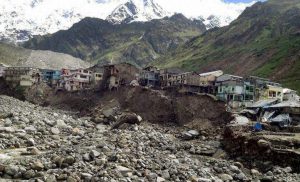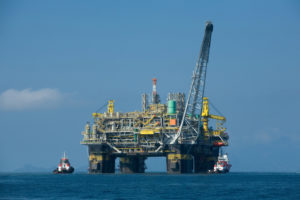On August 15, 2014, in his first Independence Day speech after becoming Prime Minister, Narendra Modi announced that he would make Swachh Bharat — creating a clean India — one of his government’s most important goals. Since then municipal vans have been going around every area of New Delhi, playing a recorded exhortation to pick up all the garbage in our neighbourhood and deposit it in the large trash bins provided for the purpose. Nearly three years after the speech, the improvement, if any, has been minimal. Outside the VIP areas, garbage still lies strewn along every road or path, rotting in the blazing sun till it is eaten by stray cattle and pigs, or turns into dust and is blown away.
What does not turn to dust is plastic, which has become the bane of our lives. One of its principal victims is India’s holy cow. Banned from selling their over-aged cattle to slaughterhouses, India’s millions of farmers and milkmen take them into adjoining towns or wastelands and leave them to fend for themselves. Large numbers survive by foraging in garbage bins and dumps. Sooner or later, they eat the plastic that is increasingly found in the garbage and die an unimaginably prolonged and painful death.
In Bengaluru, surgeons of Animal Aid India Unlimited, an NGO, operated upon an abandoned bull and extracted 20 kg of plastic from its stomach to save its life. In another similar operation, surgeons of another NGO, the Karuna society, removed 53 kg of plastic from the stomach of a cow. The plastic had accumulated over 10 years in its first stomach because, being indigestible, it could not pass to the second stomach.
Horrible end
Today, there is hardly a cow or bull in the streets of the cities that has not ingested some plastic. When their stomachs begin to swell, it is often mistaken as a sign of health, or confused with pregnancy. But the end is inevitable, and it is horrible.
In smaller cities, garbage picked up in the city streets is routinely dumped in the countryside and has become a danger to wildlife. In December 2016, the residents of Guwahati, capital of the north-eastern state of Assam, were shocked to learn that 26 majestic Greater Adjutant Storks, an endangered species, had died in the Deepor Beel bird sanctuary adjoining the city after eating garbage. The investigation that followed revealed that municipal garbage collectors had been dumping garbage in the sanctuary for years and that each year had taken its toll of the stork population of the sanctuary.
In the past six years, several cities have turned to garbage incineration to deal with their problems. More than a dozen such plants have been built on the grounds that they will yield power, in addition to cleaning up the city and saving valuable land. But incineration plants have not proved a success. The first of them, a 1,950 tonne-a-day plant at Okhla in Delhi not only generated foul smelling vapours and ash, but also released vast amounts of dioxins.
Stealthy killer
Dioxins are stealthy killers. They are trace metals that get deposited on vegetation, do not dissolve when rained upon, and therefore pass into the food chain, getting more and more concentrated as they travel up it. In ways that we are only now beginning to understand, dioxins shorten our life span. The US Environmental Protection Agency, which put together the first comprehensive report on dioxins in 1994, described them as “the most poisonous substances known to man”.
A study by Paris-based Institut national de la santé et de la recherche médicale released in 2000 revealed that waste incineration plants contributed 46% of the dioxins in the atmosphere in France and 87% in Germany. Men have absolutely no way of expelling them. Women can do so, but only by passing them to foetuses in their wombs or while breastfeeding their babies.
A test in March 2013 showed that the Okhla plant in Delhi was spewing out 30 times the permitted maximum of dioxins. A second test carried out in May, after several modifications of the process, showed that it was still emitting 2.8 to 12.7 times as much as the permitted maximum prescribed in Europe. The reason was the plant’s inability to maintain a high enough temperature to break dioxins down into their basic, non-toxic, elements. This happens at temperatures above 850 degrees Celsius, but although the plant was intended to provide steam at this temperature, maintaining it was made difficult by the variability of the composition and moisture content of the solid waste.
In December 2013, the plant was adding a steady stream of diesel to the garbage. But apart from not being exactly climate-friendly, this had pushed up the cost of waste disposal and lowered its profitability. It is not surprising that incineration has not taken off in India so far and garbage continues to disfigure the cities and more and more of the countryside as India urbanises.
Garbage into gold
There is, however, another technology that can turn garbage into gold. What is more, its most valuable feedstock is precisely the plastic that is killing animals, birds and our sense of aesthetics day by day. This technology can not only deliver far more heat and power from solid waste but turn a large part of it into any kind of transport fuel that the world consumes.
The chemistry of this technology can be traced all the way back to the making of charcoal by early man. This is to limit the supply of air, and therefore of oxygen, during the burning of biomass so that the combustion remains incomplete. What this does is to release a small amount of carbon dioxide, and a large amount of carbon monoxide and hydrogen.
Jointly, these two gases are known in industry as synthesis gas, which is the basic building material from which virtually every organic chemical in the world, ranging from urea to plastics and synthetic fibres, is now being produced. The industrial process by which this is done is known as the Fischer Tropsch Synthesis. What is not generally known is that this was first commercially used in the US in 1922 to produce methanol, which is a superior transport fuel prescribed for all major motor car races in the US from 1966 till 2008.
Revolutionary development
While the technology for converting synthesis gas into fuels has been known for a long time, the technology for converting biomass other than coal or wood into syngas has only been perfected in recent years. This is the revolutionary development that developing countries, including India, have not yet noticed. If garbage ceases to be a mere nuisance, it can be paid for. The moment this happens every speck of it will be picked up. If plastic in particular is priced on the basis of its energy content, not a speck of it will be left anywhere on the streets or beside rail tracks. The synthetic natural gas and transport fuels made from it will save not only carbon dioxide emissions but also invaluable foreign exchange.
Garbage, moreover, is not the only form of biomass that is going waste today. All the rice and wheat straw, sugarcane waste and other agricultural residues that farmers burn, or allow to rot today, can be converted into transport fuels with even greater ease, for they are purer, more homogeneous, types of biomass. Farmers will therefore be able to command a price for not only their grain or cash crop, but also for the stalks, leaves and other residues. This would easily double their incomes, and the non-agricultural employment in the rural areas.
Even the air we breathe will become vastly cleaner. The smog that settled on Delhi for days after Diwali was by far the worst it had ever experienced. It did not come from firecrackers or vehicular exhaust but from the burning of tens of millions of tonnes of rice straw in Punjab and Haryana. All of this can be turned into transport fuels through a simple, two-stage process that produces first biochar, and then electricity or transport fuels.
If Prime Minister Modi were serious about cleaning up India, he would do well to set up a task force to find the companies that own the technology today and to put them in touch with Indian companies that want to invest in them. Simply issuing generalised, scientifically illiterate tender notices for waste to energy projects and awarding them to the lowest bidders will only get them more duds like Okhla, and litter this country with the technological discards of industrialised countries.
![<p>Greater Adjutant Storks, an endangered species, have died in large numbers after eating garbage on the outskirts of Guwahati [Image by Yathin]</p>](https://dialogue.earth/content/uploads/2017/04/Garbage.jpg)
![Arctic ice continues to melt, we must approach the challenge with some hope [image by: NASA/Kathryn Hansen]](https://dialogue.earth/content/uploads/2017/04/Arctic-ice-NASA-300x200.jpg)





